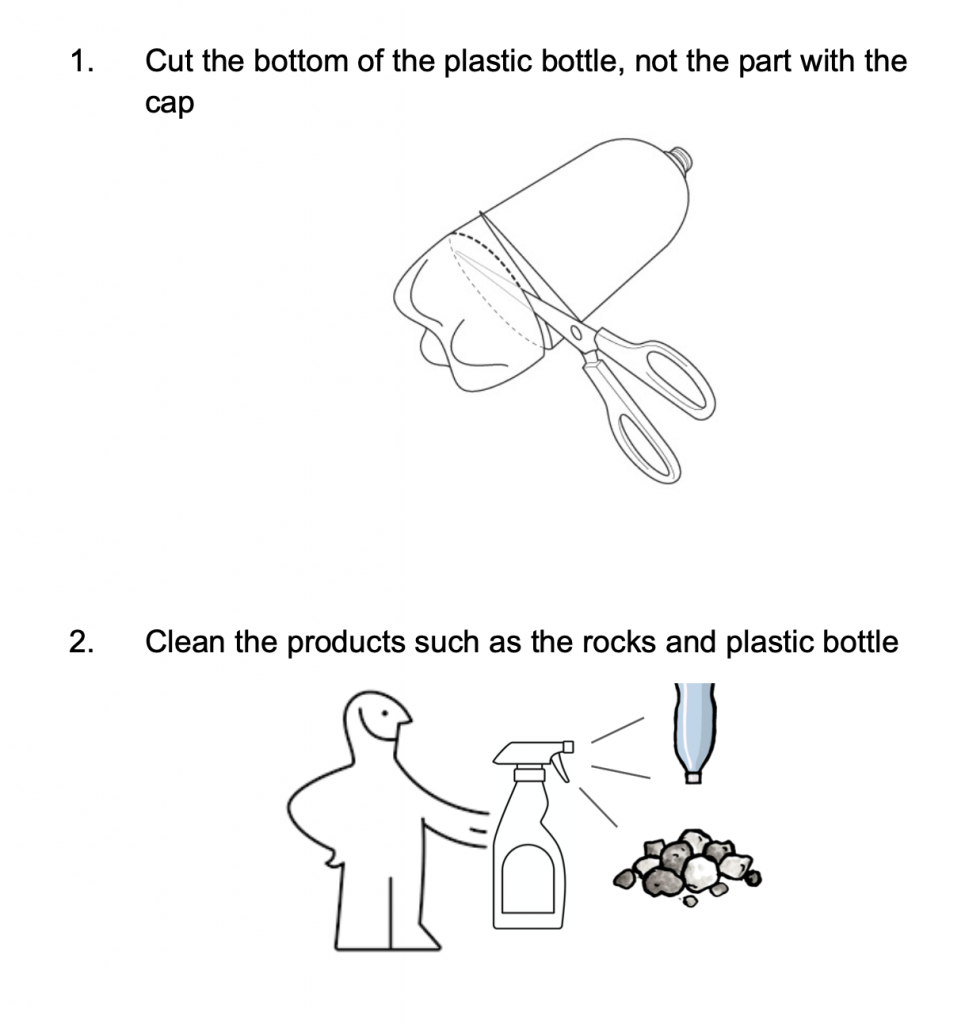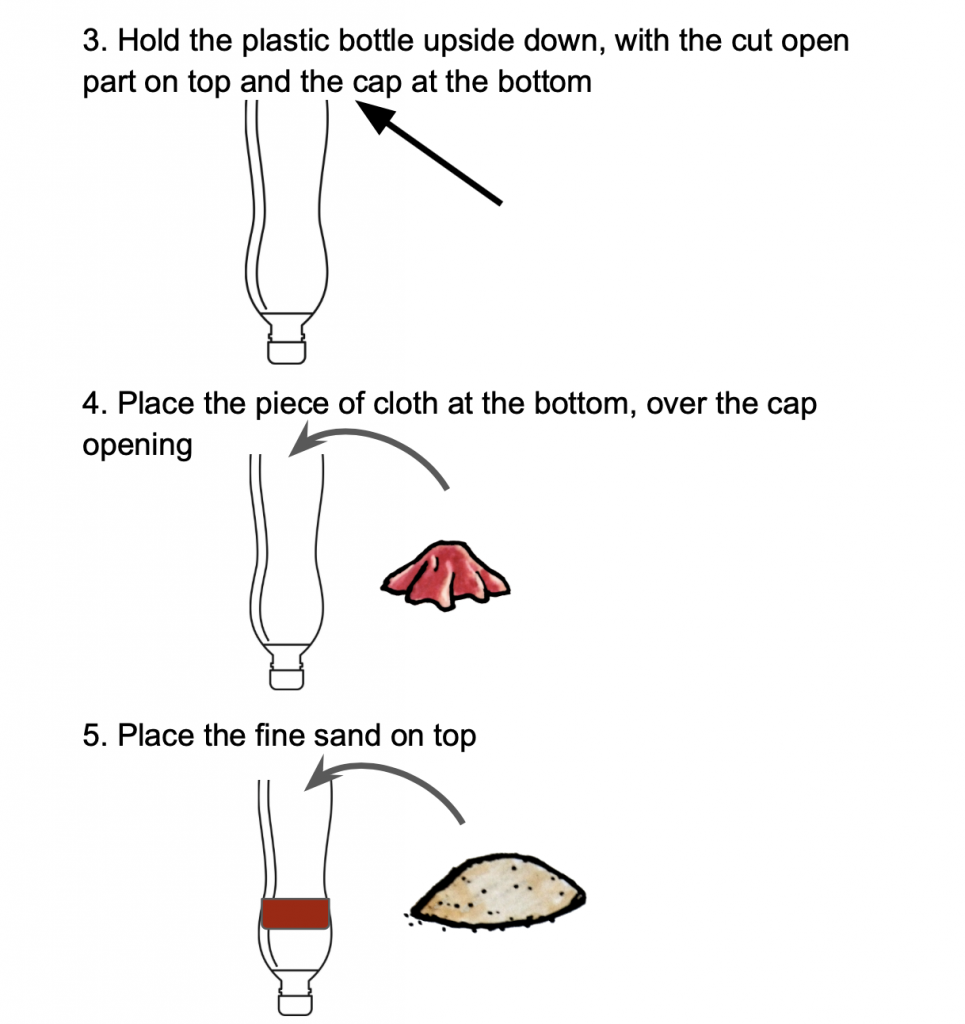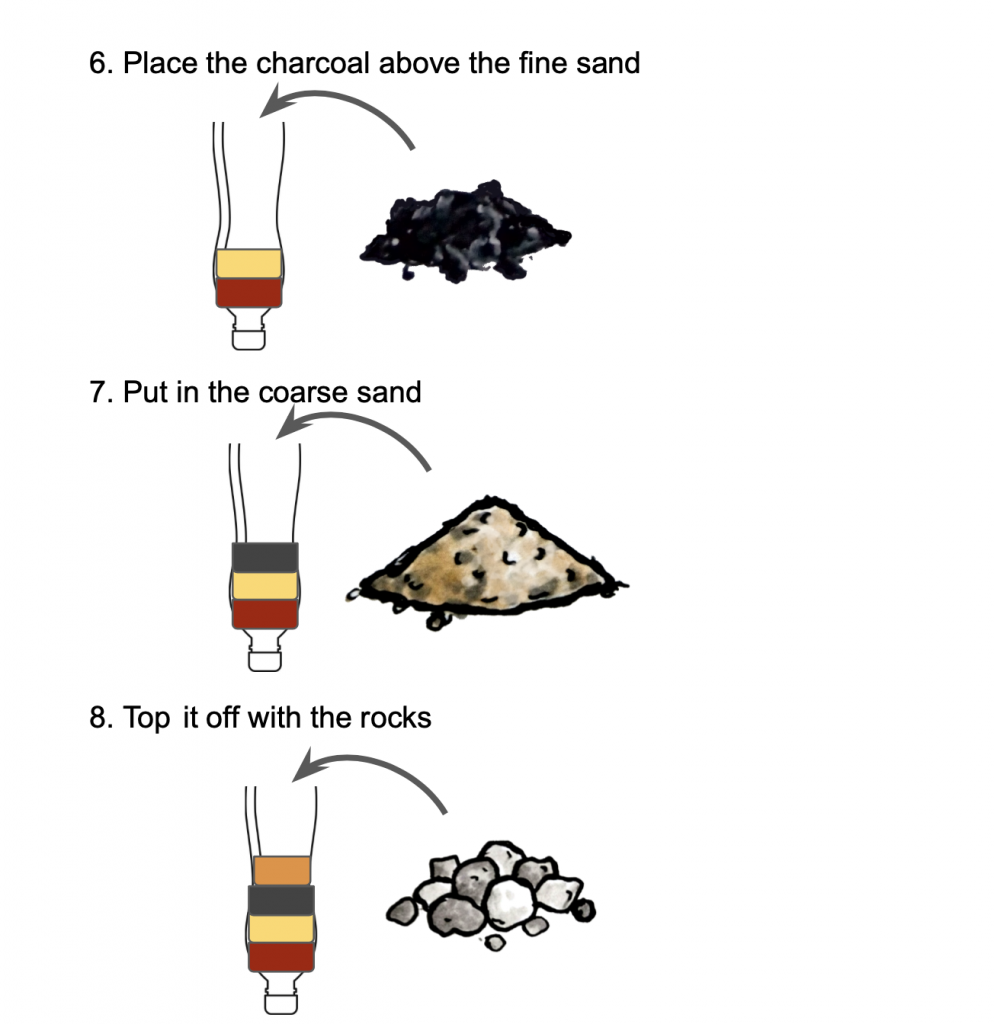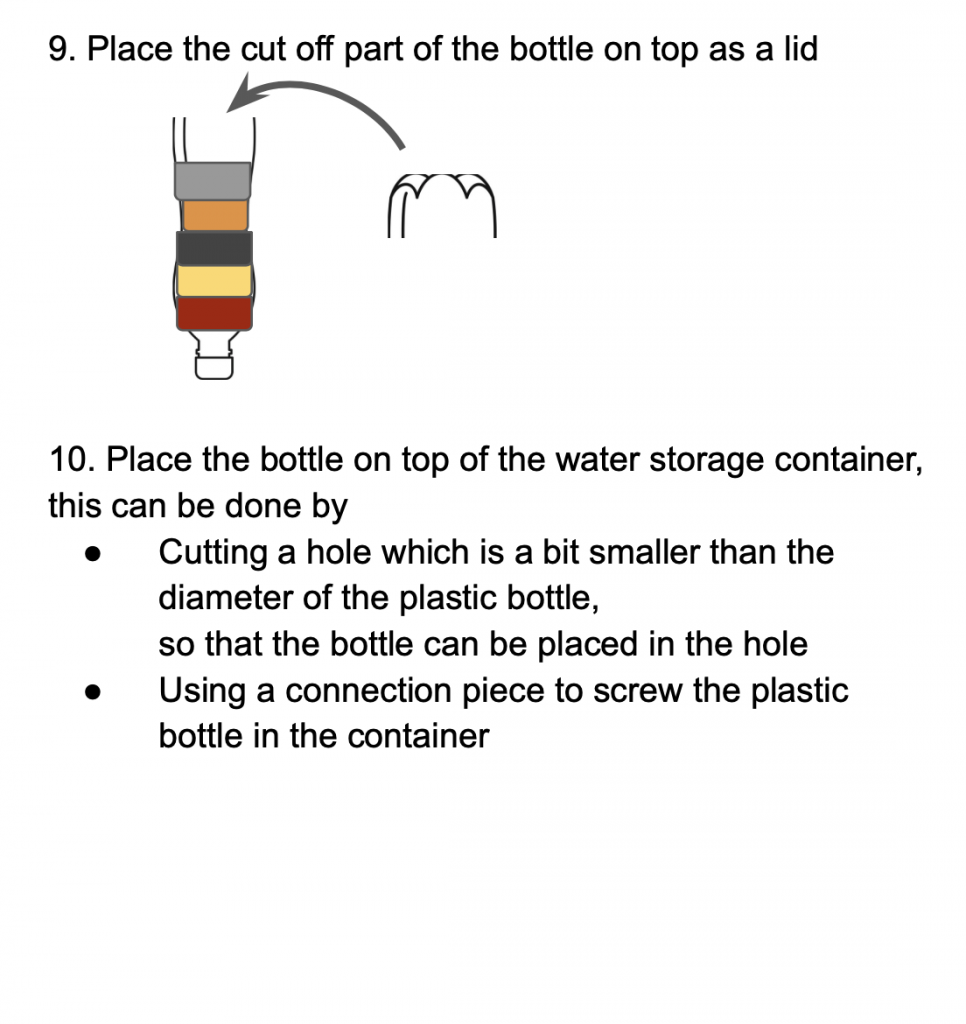
A Frugal Water Filter
Slow-filtered water has shown impressive results. Many assumptions about using sand water filtration have been made, those being that this way is old-fashioned and ineffective because of the gravitational pull. These assumptions have been shot down by research that illustrates, under the proper scenario, slow sand filtration is one of the most efficient ways of treating water.
This method is frugal: a cheap, yet effective method, being more efficient than other ways of filtering and disinfecting water. Furthermore, this method is superior because it uses local and accessible materials, and can be easily taught within the communities.
How it works
Each layer of the filter suits a specific purpose.
The gravel, or small stones, on the top layer, filters large contaminants, like leaves or insects.
The two types of sand are used to remove impurities.
The layer of activated charcoal is essential, as it removes contaminants through chemical absorption. It provides an adherent surface that sticks and deactivates the contaminants, like bacteria and chemical pollution.
The last aspect is a cloth, to ensure that nothing gets through to the outputted water.

Estimated Cost:
The cost was calculated based on research through local construction sites and making an average. After that, prices per layer were combined and the total price was converted from Brazilian Reais to Euros.
Estimated Lifetime:
With continuous cleaning and care, the filter can be used for up to five years.
The filter can continue working without being cleaned for weeks, maybe months. The more robust impurities can be easily removed from the top layer.
Effectiveness:
Research and field testing has shown impressive results of the slow-filtering process combined with the active charcoal used in the filter. It has shown 99.9% protozoan reduction, 90-99% bacterial and variable viral reduction. The tests further demonstrate a removal rate for the Escherichia coli bacteria of 90-98%, resulting in a 47% reduction in diarrhea cases for those who use the filter.
Brazilian Potability Standards
The Padrão de Potabilidade, or Potability Standard is enforced by vigilation agencies in Brazil. This text falls under the Quality Control section of the constitution and specifically addresses the measures that have to be taken to assure the potability of water.
- The water has to be tested for total coliforms and Escherichia coli bacteria.
- The maximum contaminant level for slow-filtered water is 1.0 FTU.
- The following substances are allowed at these levels:
- Chlorine Dioxide: 0.2mg/L
- Iron: 2.4mg/L
- Manganese: 0.4mg/L
- The water pH is recommended to be maintained between 6.0 to 9.5.
- It is obligatory to conduct a retest when a bacterial test reveals ambiguous or uncertain results.
Versatile in many contexts



Instruction Manuals Available!
Download the instruction manual in English and/or Brazilian Portuguese to access information or to easily build the filter yourself.

Materials Needed
The plastic bottle will act as a holder for the filter and can be found anywhere.
Make sure the bottle is clean on the inside, so the filter is the most effective.
The rocks which will be used as top layer of the filter should be cleaned off by brushing any dirt off. These rocks will act as a filter for rougher materials, such as twigs.
Ideally, the rocks should be from 2cm to 4cm in diameter, and the layer should be approximately 5cm long.
Coarse sand acts as the second layer in the filter.
The layer has to be at least 2.5cm long.
Charcoal can be easily made by burning organic material, like wood.
The activated charcoal layer should be at least 2cm in height.
To activate the charcoal, pulp-free lemon juice can be used. This needs to be mixed with the charcoal until a paste-like slurry has been made. The lemon juice is allowed to soak in the charcoal for 24 hours.

This layer is extremely important, as it removes contaminants through chemical absorption. It provides an adherent surface that sticks and deactivates the contaminants.
Fine sand is finer than coarse sand and acts as a final layer to the filter.
This layer should be approximately 2.5 centimeter in length.
Any cloth or towel-like material would work. E.g. Cotton, wool… One example is to reuse old clothing that cannot be repaired as the necessary layer of cotton. This cloth layer will ensure that all the filtering materials stay within the plastic bottle, whilst the water can flow trough.
Make sure the cloth is clean, the soap made from the recipe provided can be used to clean the cloth.
How to make the filter





 Plastic Bottle
Plastic Bottle Rocks / Gravel
Rocks / Gravel  Coarse Sand
Coarse Sand  Activated Charcoal
Activated Charcoal Fine Sand
Fine Sand Cloth
Cloth